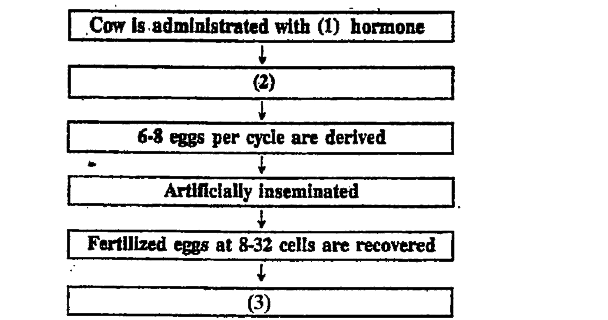Develop a taxonomic key for the following : Cat, dog, cow, buffalo, goat, sheep, parrot, hen, duck.
To develop a taxonomic key for the given animals (cat, dog, cow, buffalo, goat, sheep, parrot, hen, duck), we will follow a systematic approach based on observable characteristics. Here’s a step-by-step solution:
Step 1: Identify Major Groups
First, we can categorize the animals into two major groups based on their physical characteristics: mammals and birds.
- Mammals: Cat, Dog, Cow, Buffalo, Goat, Sheep
- Birds: Parrot, Hen, Duck
Step 2: Further Classify Mammals
Next, we can further classify the mammals based on specific characteristics.
1. Presence of horns or antlers:
- If yes: Go to Step 3.
- If no: Go to Step 4.
Step 3: Identify Horned Mammals
- Horns Present:
- If the animal is large and domesticated: Buffalo
- If the animal is medium-sized and domesticated: Goat
- If the animal is medium-sized and domesticated: Sheep
Step 4: Identify Non-Horned Mammals
- No Horns:
- If the animal is small and domesticated: Cat
- If the animal is medium-sized and domesticated: Dog
- If the animal is large and domesticated: Cow
Step 5: Classify Birds
Now, let’s classify the birds based on their characteristics.
1. Presence of a strong beak:
- If yes: Go to Step 6.
- If no: Go to Step 7.
Step 6: Identify Strong-Beaked Birds
- Strong Beak:
- If the bird is colorful and can mimic sounds: Parrot
Step 7: Identify Other Birds
- No Strong Beak:
- If the bird is domesticated and commonly found on farms: Hen
- If the bird is waterfowl: Duck
Final Taxonomic Key
1. Mammals
- Presence of horns:
- Yes:
- Large: Buffalo
- Medium:
- Domesticated: Goat
- Domesticated: Sheep
- No:
- Small: Cat
- Medium: Dog
- Large: Cow
2. Birds
- Strong beak:
- Yes: Parrot
- No:
- Domesticated: Hen
- Waterfowl: Duck
First, we can categorize the animals into two major groups based on their physical characteristics: mammals and birds.
- Birds: Parrot, Hen, Duck
Next, we can further classify the mammals based on specific characteristics.
- If yes: Go to Step 3.
- If no: Go to Step 4.
- Horns Present:
- If the animal is large and domesticated: Buffalo
- If the animal is medium-sized and domesticated: Goat
- If the animal is medium-sized and domesticated: Sheep
- No Horns:
- If the animal is small and domesticated: Cat
- If the animal is medium-sized and domesticated: Dog
- If the animal is large and domesticated: Cow
Now, let’s classify the birds based on their characteristics.
- If yes: Go to Step 6.
- If no: Go to Step 7.
- Strong Beak:
- If the bird is colorful and can mimic sounds: Parrot
- No Strong Beak:
- If the bird is domesticated and commonly found on farms: Hen
- If the bird is waterfowl: Duck
1. Mammals
- Presence of horns:
- Yes:
- Large: Buffalo
- Medium:
- Domesticated: Goat
- Domesticated: Sheep
- No:
- Small: Cat
- Medium: Dog
- Large: Cow
2. Birds
- Strong beak:
- Yes: Parrot
- No:
- Domesticated: Hen
- Waterfowl: Duck
Topper's Solved these Questions
- THE LIVING WORLDBOOK - PRADEEPCHAPTER - THE LIVING WORLDEXERCISE - ANALYTICAL (QUESTIONS WITH ANSWERS)
19 Videos
- THE LIVING WORLDBOOK - PRADEEPCHAPTER - THE LIVING WORLDEXERCISE - PRACTICE QUESTIONS(MULTIPLE CHOICE QUESTIONS)
52 Videos
- THE LIVING WORLDBOOK - PRADEEPCHAPTER - THE LIVING WORLDEXERCISE - ADDITIONAL QUESTIONS (SHORT ANSWER QUESTIONS)
31 Videos
- STRUCTURAL ORGANIZATION IN ANIMALSBOOK - PRADEEPCHAPTER - STRUCTURAL ORGANIZATION IN ANIMALSEXERCISE - Practice Questions (Assertion-Reason Type Questions)
6 Videos
- TRANSPORT IN PLANTS BOOK - PRADEEPCHAPTER - TRANSPORT IN PLANTS EXERCISE - Notable Question
1 Videos
Similar Questions
Knowledge Check
Following methodology has been used for cattle, sheep, buffaloes etc.
 A1-FSH,2-Superovulation due to induced follicular maturation 3 - Transfer to surrogate motherB1−LH,2 - Superovulation due to induced follicular maturation, 3 ? Transfer to surrogate motherC1 - Progesteron, 2 - Superovulation due to induced follicular maturation, 3 - Transfer to surrogate motherD1 - Estrogen, 2 - Superovulation due to induced follicular maturation, 3 - Transfer to surrogate mother
A1-FSH,2-Superovulation due to induced follicular maturation 3 - Transfer to surrogate motherB1−LH,2 - Superovulation due to induced follicular maturation, 3 ? Transfer to surrogate motherC1 - Progesteron, 2 - Superovulation due to induced follicular maturation, 3 - Transfer to surrogate motherD1 - Estrogen, 2 - Superovulation due to induced follicular maturation, 3 - Transfer to surrogate motherHow many of the following are taxa? Dogs, Cats, Mammals, Wheat, Rice, Plant, Wood, Mango, Leaves, Jointed legs.
AEightBSixCSevenDOneThe first and largest chamber in the stomach ofruminants such _as cattle, buffalo, sheep, goat, and camel is
AReticulumBRumenCOmasumDAbomasum
Give food habits of following animals:cat,rat,hen,crow,spider,lizard,cow,horse.
View SolutionFill up the blanks with the words given: herbivore,plant,milk,sugarcane,carnivore.
The ………..that we drink, which comes from cows, buffaloes and goats is an animal product.
View SolutionBabesia species causes tick fever in which of the following
A) cattle (cow and buffelo) B) dogs
C) birds D) man
View SolutionWhich of the following are true with reference to taxonomical aids?
1. Separate taxonomic keys are requried for each taxonomic category.
2. Herbarium is a store house of collected plant and animal specimens.
3. Each statement in the key is called couplet.
4. Keys are used for identification purpose.
View SolutionWhich key person in the promotion of sustainable development and biodiversity issued the following quotation : the library of life is burning and we don't even known the titles of the books ?
View Solution
